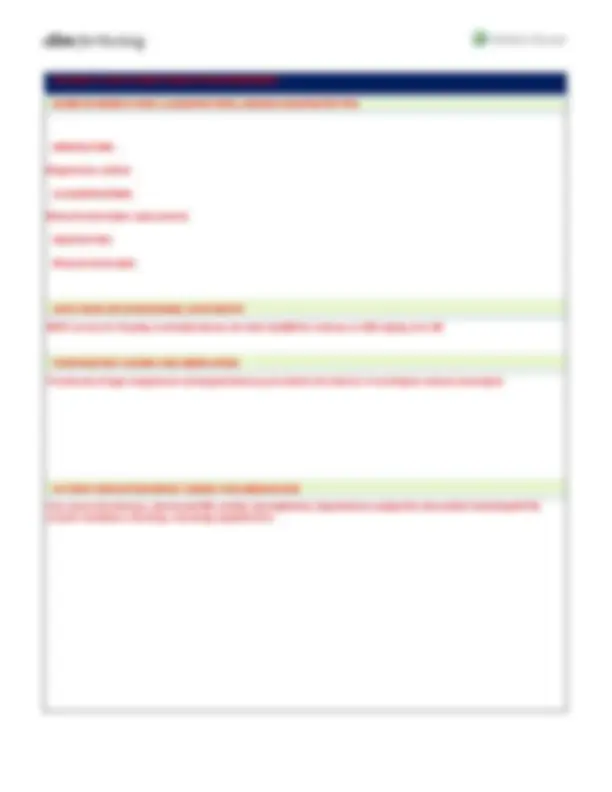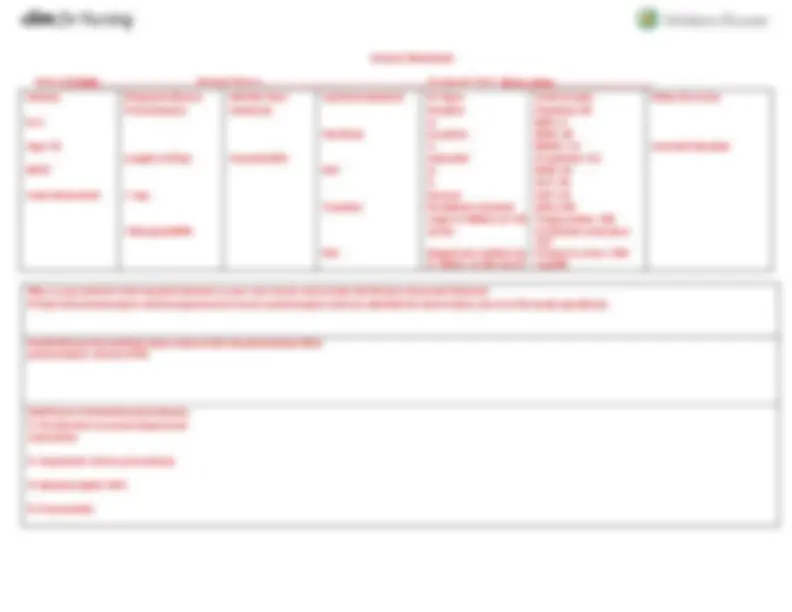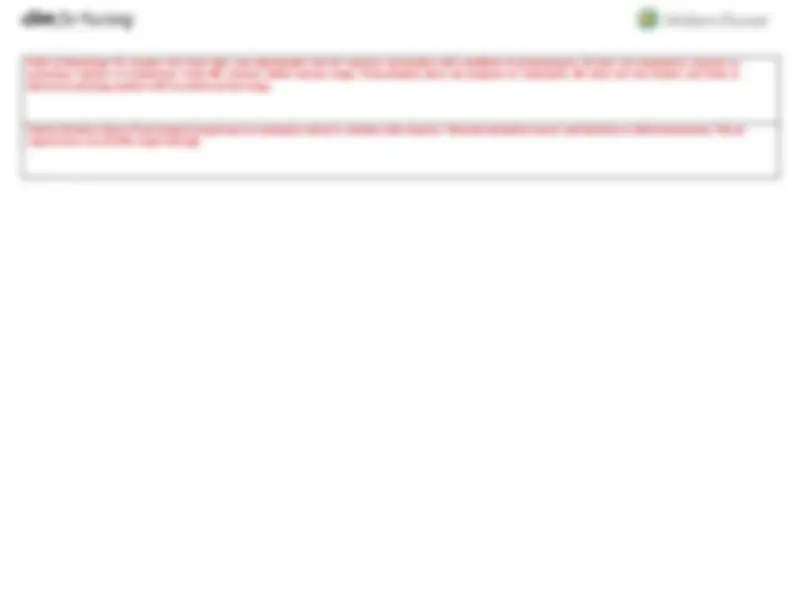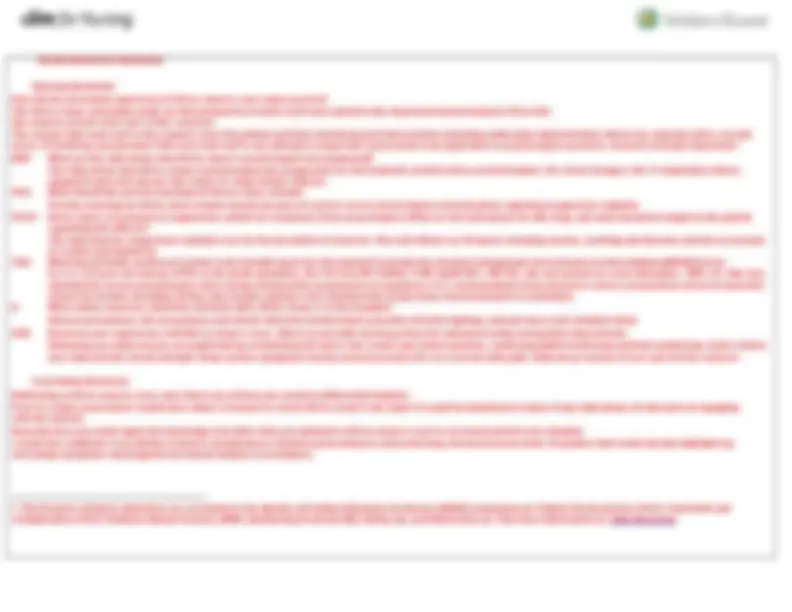








Study with the several resources on Docsity

Earn points by helping other students or get them with a premium plan


Prepare for your exams
Study with the several resources on Docsity

Earn points to download
Earn points by helping other students or get them with a premium plan
Community
Ask the community for help and clear up your study doubts
Discover the best universities in your country according to Docsity users
Free resources
Download our free guides on studying techniques, anxiety management strategies, and thesis advice from Docsity tutors
Clinical_vSim_Assignment_Olivia_Jones.docx .pdf
Typology: Exams
1 / 12

This page cannot be seen from the preview
Don't miss anything!







Preeclampsia is characterized by high blood pressure after 20 weeks gestation. It is grouped into mild and severe and then progresses to eclampsia. Mild preeclampsia is blood pressure >140/90 mm Hg and severe is >160/110 mm Hg. The pathophysiology is largely unknown but it involves both vasospasm and hypoperfusion. It causes pulmonary edema, oliguria, seizures, thrombocytopenia, and abnormal liver enzymes. DIAGNOSTIC TESTS (REASON FOR TEST AND RESULTS)
Ultrasound to monitor FHR Pitting dependent edema, increased BP, >140/90, Hepatic Function Panel to monitor for organ damage facial edema, weight gain, oliguria, headache, AST/ALT to monitor for organ damage CBC to monitor for platelets, RBCs, MCH, MCHC Urine dip stick to monitor for proteinuria; a warning sign difficulty breathing, epigastric pain, visual changes ANTICIPATED NURSING INTERVENTIONS Monitor labs CBC, urine dip stick, liver function tests Monitor BP and HR frequently Auscultate lung sounds Attach electronic FHR monitor Obtain ultrasound Assess for dependent edema Monitor SpO Limit stimuli such as visitors, light, and sound Apply nonrebreather mask Assess for visual changes Administer medications as ordered Provide emotional support Provide pt education Monitor for progression of preeclampsia Provide pt safety including maintaining the bed in low and locked position Pad railings and implement seizure precautions Assess deep tendon reflexes
vSim ISBAR ACTIVITY (^) STUDENT WORKSHEET INTRODUCTION Your name, position (RN), unit you are working on SITUATION Olivia^ Jones,^ 23,^ admitted^ for^ severe^ preeclampsia Patient’s name, age, specific reason for visit BACKGROUND Pt is diagnosed with severe preeclampsia, admitted 5/7/2020, current orders are NPO until serum lab results are in, bed rest with bathroom privileges, BP Q1Hx2 then Q4H, T, HR, RR Q1H, breath sounds Q4H, FHR/UC monitoring, DTR Q1H, head to toe Q4H, continuous SpO2, IV care, ultrasound, foley catheter, place seizure pads, minimize stimuli, NRB mask for SpO2 <92% Patient’s primary diagnosis, date of admission, current orders for patient ASSESSMENT BP^ 164/98^ T 99F RR 22 HR 110 SpO2 92% Pt c/o visual changes, headache, and epigastric pain The pt has crackles in the lower lobes of the lungs The pt has low platelets, RBCs, MCH, MCHC and elevated creatinine, BUN, ALT/AST and has protein in the urine >455 mg/24H Current pertinent assessment data using head to toe approach, pertinent diagnostics, vital signs RECOMMENDATION I recommend the pt be placed on seizure precautions and environmental stimuli be limited, including visitors. She should continue to be monitored for progression of preeclampsia to eclampsia. She should be fitted for a risk for falls pt bracelet. The pt should be educated on condition and medications. Continue to monitor for contractions. Monitor BP Q1H. Any orders or recommendations you mayhave for this patient
Clinical Worksheet Date: 5/7/2020 Student Name: Assigned vSim: Olivia Jones Initials: Diagnosis:Severe HCP:Dr. Sara Isolation:standard IV Type: Critical Labs: Other Services: Preeclampsia Anderson Peripher Platelets: 98 O.J. al RBC: 5 Fall Risk: Location: MCH: 28 Age: 23 1: MCHC: 12 Consults Needed: Length of Stay: Consults:N/A antecubit Creatinine: 2. M/F:F N/A al BUN: 32
medication
Path to Discharge: Pt remains free from falls and understands risk for seizures associated with condition of preeclampsia. Pt does not experience seizures or premature rupture of membranes. Fetal HR remains within normal range. Preeclampsia does not progress to eclampsia. BP does not rise further and fetus is delivered returning mother’s BP to within normal range. Path to Death or Injury: Preeclampsia progresses to eclampsia and pt is stricken with seizures. Placenta abruption occurs and the fetus is delivered preterm. The pt experiences irreversible organ damage.
Reflection Questions Paste your reflection questions in the box below
Guided Reflection Questions Opening Questions How did the simulated experience of Olivia Jones’s case make you feel? The Olivia Jones simulation made me feel prepared to monitor and treat a patient who experienced preeclampsia. Describe the actions you felt went well in this scenario. The actions that went well in the scenario were the patient and fetal monitoring and interventions including medication administration which was checked with a second nurse. Prioritizing assessments I felt also went well in my attempt to target the assessment most applicable to preeclampsia concerns. Scenario Analysis Questions 1 EBP What are the indications that Olivia Jones’s preeclampsia has progressed? The indications that Olivia Jones’s preeclampsia has progressed are the headache unrelieved by acetaminophen, the visual changes, the 3+ dependent edema, epigastric pain and nausea and clonus 4+ deep tendon reflexes. PCC What should the priority teaching for Olivia Jones include? Priority teaching for Olivia Jones should include her plan of care for severe preeclampsia and education regarding magnesium sulphate. PCC/I Olivia Jones was placed on magnesium sulfate for treatment of her preeclampsia. What are the indications for this drug, and what should be taught to the patient regarding side effects? The indication for magnesium sulphate was for the prevention of seizures. The side effects are GI upset, including nausea, vomiting and diarrhea and the occurrence of cardiac dysrhythmias. T&C What key elements would you include in the handoff report for this patient? Consider the situation-background-assessment-recommendation (SBAR) format. O.J. is a 23 year old woman, G1P0, at 36 weeks gestation. Her VS were BP 164/98, T 99F, SpO2 92%, HR 101, she was placed on a non-rebreather, 100% air. She was admitted for severe preeclampsia and is being monitored for progression of symptoms. It is recommended she be placed on seizure precautions and environmental stimuli be limited, including visitors. She should continue to be monitored for progression of preeclampsia to eclampsia. S What safety measures should be initiated while Olivia Jones is in the hospital? Seizure precautions, fall precautions and stimuli should be limited where possible with dim lighting, reduced noise and visitation limits. S/QI Based on your experience with Olivia Jones’s case, reflect on possible nursing actions for enhanced safety and quality improvement. Enhancing pt safety may be accomplished by maintaining the bed in the lowest and locked position, continuing SpO2 monitoring and fetal monitoring. Limit visitors and reduced both sound and light. Keep suction equipment nearby and ensure bed rails are covered with pads. Educate pt on plan of care and risk for seizures. Concluding Questions Reflecting on Olivia Jones’s case, were there any actions you would do differently? Explain. Prior to verbal assessment I would have taken a moment to review Olivia Jones’s lab report. It would be beneficial to know of any indications of risks prior to engaging with the patient. Describe how you would apply the knowledge and skills that you obtained in Olivia Jones’s case to an actual patient care situation. I would feel confident in my ability to detect complications related to preeclampsia and performing a focused assessment of systems that would quickly highlight any worsening symptoms and progression of preeclampsia to eclampsia.